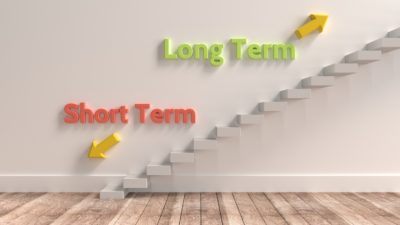The FTSE 100 stock market crash has caused paper losses for many investors. Despite the index’s recent rebound, it continues to trade below its 2020 starting price.
However, the index has a long history of delivering impressive returns. Investors who bought FTSE 100 shares 35 years ago, for example, are likely to have enjoyed high returns on their capital.
As such, now could be the right time for long-term investors to purchase cheap large-cap shares. They could post surprisingly strong capital growth as the world economy recovers.
FTSE 100 long-term performance
The FTSE 100 may be down year-to-date, but it trades significantly higher than it did 35 years ago. Back then, it was trading at around 1,260 points. As such, £10,000 invested in a diverse range of blue-chip shares in 1985 could be worth around £133,000 today when reinvested dividends are included.
During that 35-year period, the index has experienced a number of major bear markets. They have included the 1987 crash, the tech bubble, global financial crisis and the 2020 coronavirus crash.
Despite falling by over 50% during some of those declines, the index has been able to outperform other mainstream assets to provide long-term investors with a significantly higher portfolio value. As such, using a buy-and-hold strategy has been a sound move. Although investors may have experienced periods of disappointment, holding large-cap shares through downturns and bear markets has generally been rewarded by continued growth.
Buying today
Of course, investing £10,000 in FTSE 100 shares today may or may not produce a similar result over the next 35 years. However, it could prove to be a more realistic goal than many investors realise.
A key reason for this is that the index currently appears to offer good value for money. As mentioned, it is trading below its price level from the start of the year, and has not been able to fully recover from its market crash. Therefore, investors can purchase high-quality businesses while they offer wide margins of safety. This may lead to relatively high returns, as investors can buy stocks at a lower value than in previous years.
Furthermore, many investors in other assets may gradually pivot towards FTSE 100 shares. Low return expectations on bonds and cash due to low interest rates could cause the stock market to become increasingly popular among investors. This may push stock prices higher over the coming years – especially as monetary policy stimulus has the potential to improve the world economy’s outlook.
A long time horizon
Clearly, not all investors have a 35-year time horizon. They may have less time in which to build a portfolio for retirement, for example.
However, the example above serves to show that the FTSE 100 is capable of producing high returns over the long run despite periods of difficulty along the way. After the market crash, some investors may be understandably cautious about buying stocks. However, the index’s track record suggests that it has sound recovery potential and is likely to produce attractive relative returns in the coming years.







